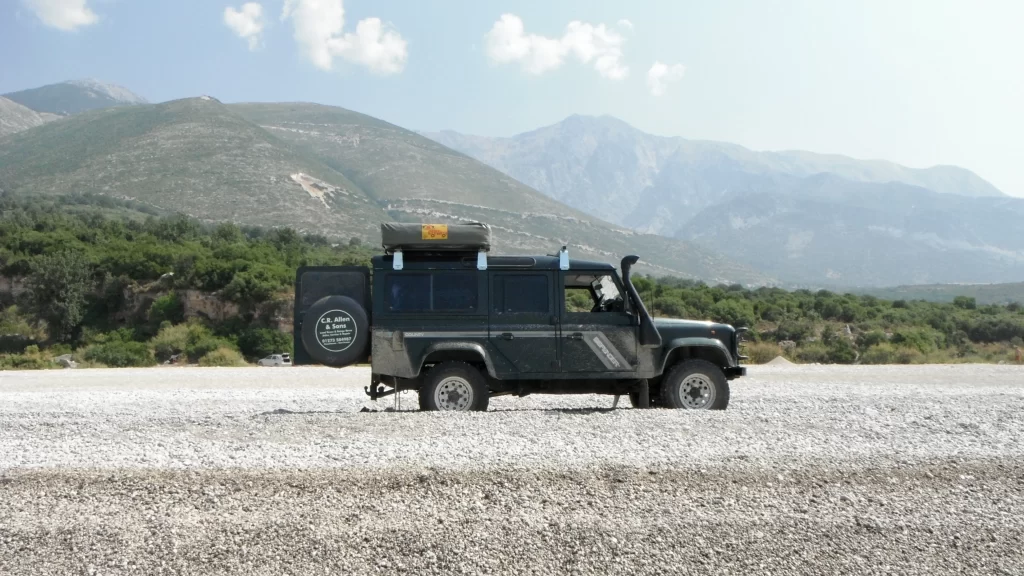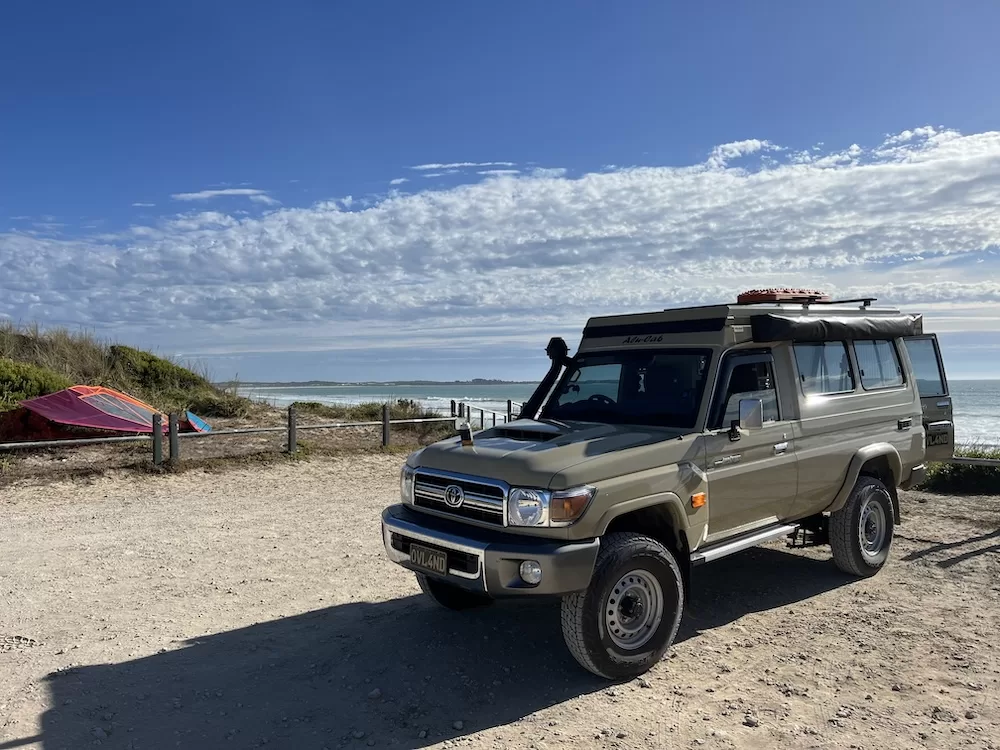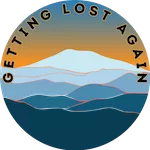
What is Overlanding? A Primer
What does Overlanding mean?
Overlanding in Essence
If you want to know “What is Overlanding?”, then let’s set the scene. Imagine waking up in a location, which is remote from most of society and is beautiful, perhaps on a mountain, or in a vast desertscape. You got here of your own accord over a few days, you are now able to stop and relax. You have no need for anyone else or anything else. The satisfaction runs deep, your resourcefulness and vehicle is what has enabled this.
This is the charm of overlanding, a thrilling blend of off-road travel and self-reliant adventure. But what exactly is the Overlanding?
Overlanding Topics
- What is Overlanding? A Primer
What Is Overlanding?
Overlanding is the act of travelling in an independent fashion, where the destination is not the primary goal. In Overland Travel the journey, which is often remote, forms an integral part of the overall experience. Travelling this way often means that periods of travel can be extended beyond those typically experienced by the general population.
What overland travel offers is unique, in that the self-reliant aspect of the travel allows you to explore places that are not typically available to people. This flexibility allows for ultimate freedom, if you like the place, then stay, curious about a road, so take it. It’s that simple.
Regardless of whether you are a seasoned outdoor traveller or a beginner eager to experience a remote destination, which could otherwise be inaccessible. This guide will give you insight and knowledge about the basics to start Overlanding adventures. We’ll get into the history, some benefits, and much more. We also touch on some common questions in this article.
History of Overlanding
Overlanding is often associated with 4WD touring, where there is a natural association with off-roading. However the term “Overlanding” is thought to have emanated from Australian Outback cattle drovers, moving cattle from remote outback stations to markets in towns, often following established routes which are now well known to modern-day overlanders, such as the Canning Stock Route.
More recently overland travel has been associated with not only 4×4 vehicles, but also with bike travel known as bike-packing, and train journeys such as the trans-siberian in Russia or the Pacific Overlander in Australia. These forms of overlanding are quite different from 4WD overlanding, having more in common with backpacking or even long-distance hiking.
But having said all that, there is a natural tendency to consider the literal term “Overland”, which would go back to various stages in history, where travellers followed routes such as the Silk Road to get from one place of trading to another. Explorers like Marco Polo explored new lands and mapped uncharted territories to form these routes, and many of the tracks in the Maritime Alps were once part of a wider network of trading routes. Of course on these journies, the overlanders of the times would travel on foot or by horse. There are even tales of Elephants travelling to what is now mainland Europe. These journeys were truly self-sufficient and adventurous.
Overland vehicles
In the 20th century and to this day, motorised vehicles made Overlanding easier and much more accessible, the military influenced this as they developed suitable vehicles through necessity, forming companies such as, what is now Mercedes Benz, and Land Rover, these vehicles have become famous for their adventure travel capabilities and in some cases have developed a cult-like following. Modern technology has made overlanding more accessible and comfortable for modern adventurers worldwide.
Some of the most popular and best vehicles for global overlanders are:
- Land Rover Defender 110 and 130, although the 90 is popular for the solo overlander. We owned a 110 Defender for many years, which was set up for overlanding, we travelled all over Europe in that vehicle and experienced some great times. Unfortunately, the Land Rover does have a bit of a reputation for being unreliable, we did experience a few issues over the years. Most of these were due to previous poor maintenance, I gradually improved the vehicle over the time we owned it.

- Toyota 60-Series, 70-Series, 80-Series and 100-Series. The Troop carrier (75-series and 78-series) is a popular choice, known as a Troopy in Australia because it is seriously reliable and capable and is graced with van-like proportions. Globally there are many aftermarket accessories, which make this a perfect vehicle for conversion to an overlander. The saloon equivalent would be the 76-series, which is slightly shorter and has 5-doors.

Check out our LandCruiser 78 Troopy Overland build
- G-Wagon – The Mercedes Geländewagen or G-Wagon as it is more commonly known is another legend in the world of overlanding and was also the vehicle of choice for the famous Overland explorer and RAF test-pilot Tom Sheppard, who has written many wonderful books on the topic.
- Ineos Grenadier – Emerging from the demise of the Defender, and clearly very capable, with its BMW engine and auto ZF gearbox. At the moment (2024) there is limited support in terms of aftermarket accessories, but we have seen roof conversions for the Grenadier already and a few people modifying them to place auxiliary tanks under the vehicle. I have no doubt this will be a popular choice in year to come.
Benefits of Overlanding
Having explored many areas of the world in a 4WD, the main benefits of travelling overland are that you have complete flexibility within your time constraints to do as you please.
Overlanding can be seen to have a huge initial outlay, but I don’t think that is completely true. You can start with a very basic setup using the vehicle you have, which means that it can be fairly budget-friendly to travel this way. One of the best tips to save money whilst travelling is to slow down! Embrace slow travel and just soak up wherever you are. We love getting to a remote place and using our vehicle as a base for day hikes or in my case remote training runs.
Overlanding is a rewarding way to travel the world. Travelling this way can be a mind-blowing journey for individuals of all ages to enjoy nature and explore remote areas. Often people who travel this way discover a lot about themselves as they unpack minor challenges and decisions throughout the trip.
Common Challenges Faced by Overlanders
It’s not uncommon to experience challenges of various scales whilst on a trip, this could be something simple or something more serious, over the years we have had our fair share.
- Vehicle Issues: From punctures or punctured differentials to electrical niggles, it’s worth getting to know your vehicle. Many overlanders enjoy the experience of building their vehicles, this gives them the problem-solving knowledge to fix minor issues on the road.
- Unpredictable Weather: We can never control the weather from severe winds and lightning to floods. You could have to roll with the punches and potentially hunker down or change your plans.
- Safety: You’ll be exposed to natural, political and physical safety issues. Whether it’s hustlers at the border or sudden road collapses, you’ll need to be on your toes.
- Limited Resources: By the very nature of this kind of travel, you have to be conscientious and mindful of the resources you have and how long you need them.
Popular Overlanding Routes and Destinations
Most people who get into overlanding, find themselves here by necessity. They have a bucket list item or a crazy idea, such as driving the Pan American highway or navigating east or west Africa to Capetown. That’s how it started for us anyway.
For us, our initial plan was to drive from where we lived in the south of England to South Africa. For most, this would be like saying let’s drive from London to Capetown. at the time we had no idea, how the hell you would go about that, but we soon discovered that there are basically two options, the eastern route or the western route.
East African Overland Route
This route gives several choices to get from Western Europe to Cape Town. Head down to Venice, Italy and jump on the overnight ferry to Alexandria, sounds simple right? Then head south via Sudan, Ethiopia, Kenya, Tanzania, Malawi, and Mozambique to South Africa.
The other popular choice is to drive via the Balkan states through mainland northern Greece to Turkey and then down to Egypt via Syria and Jordan. This too has a variation through Serbia and Bulgaria. Ultimately, it is down to the political situation at the time and also what you would like to see. Oh and also time. Allow a year for this route.
West African Overland Route
Travellers often use Western Europe as the gateway to this route, taking a ferry from Spain to Morrocco. Then heading down via Western Sahara, Mauritania, Senegal, The Gambia, Guinea, Liberia, etc. Again depending on the situation at the time you may need to vary the route to avoid regions or countries. The main factor with this route is the wet season when roads turn into a mudbath.
Global Overland Routes
For many when you talk about Overlanding these are the routes or journeys and destinations that come to mind:
- Pan American
- Trans-Siberian
- Canning Stock Route
- Denali National Park in Alaska
- The Rocky Mountains
- Rainforests of Central America
- Trans-America Trail
- Patagonia
- Perito Moreno Glacier
- The Atacama Desert in Chile
But there are so many more to consider. There are several fantastic overland routes in Europe as well. You can travel the picturesque and historically significant Alps routes, which cross several nations including France, Switzerland, and Italy we combine this often with the Balkans. The Balkan states combine untamed landscapes and vibrant cultures, with stunning itineraries passing through nations like Bosnia and Herzegovina (BIH), Croatia, Serbia, Montenegro and of course Albania.
Planning your trip
All of these choices sound awesome, right? But there is a lot of planning that goes into them. You need to consider when and where you are going, to allow for the logistics of the trip. Visas, Carnet de Passages en Douane etc.
Basic Gear to Get Started
It’s easy to get lost in a massive list of all the latest accessories or equipment you need to start a trip. I’m here to tell you that is the expensive way to get into it and completely overkill!
My first bit of advice is to pick a place, throw what you have in the car and just go! Use the car you have and the gear you already have. If you have nothing, borrow it. I say this because what one person has is probably not what you need and possibly not what you can afford and we would much rather you have an experience than not because you think you need some weird bit of stuff.
Having said that you’ll need a few things to get started:
- Vehicle: A means of travel, use what you have, you’ll be surprised how far you can get by considerately driving a regular sedan.
- Navigation: Google Maps is a great place to start, many unpaved roads, which you would consider off-road and may not be travelled by the masses, are actually public highways and so are available on public maps. Also, consider Gaia GPS or Maps.me. Both of the latter work offline.
- Apps: iOverlander, Wikicamps (Australia), Google Translate
- Food: You’ll need to think about how many days you are away and what opportunities you’ll have along the way to stock up. If you have any special dietary needs, think about the likelihood of not being able to get what you need on the road.
- Fridge or Coolbox, Esky: Depending on what food you have you might need to consider something to keep the food fresh and safe.
- Hygiene: Toiletaries, etc. You know what you need. Pack a standard non-electric toothbrush too!
- Camping, Sleeping Gear: Consider the climates you will be in, it is not uncommon to have to deal with multiple climates during a trip. We pack a decent sleeping bag and blankets. If you are camping make sure you sort out a folding chair for each person and a table of some form. Don’t forget lighting, head torches, etc.
- Clothing, SunBlock, Hats, etc. Equally, if it is cold…
- Some tools for basic tasks that may occur on the vehicle or on the trip. Don’t forget to check your spare tyre and the tools needed to change the wheel… If you have never done this, practice and learn!
- First Aid Kit
- A book!
- Phone/Camera
On more involved longer trips we would need to get into more comprehensive tools, spares and provisions planning.
Check out our Overland Trip Planning Checklist
